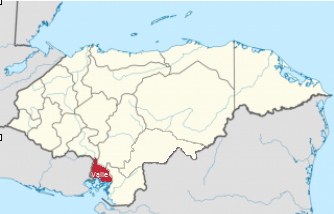El Junquillo, Honduras

![]()
![]()
![]()
![]()
![]()
![]() Click on Programs to learn more about their work in this community
Click on Programs to learn more about their work in this community
General Information

| Population* | 560 |
| Number of homes | 100 |
| Avg # of people per home | 5.6 |
| Number and % of children |
50 (ages 5-12) 9% of the population |
| Primary Occupations |
Agriculture - corn and beans |
| Water System | Under construction - pump system |
| Community Bank | No |
| % of Homes with Latrines |
25% |
| Electricity | Yes |
| Corresponding Health Center | CESAR-Langue |
| Common Illnesses |
Respiratory Problems, Diarrhea |
| School Access & Distance | 1st-6th grade in community, 7th-9th grades in Langue |
| Municipality | Goascorán |
| Department | Valle |
| GPS |
N 13° 37.111’ W 87° 40.961’ |
| Distance from compounds | 1 hour 30 minutes |
| Road conditions |
Good |
* Population does not reflect how many patients will be seen on medical
brigades as many people from surrounding communities come seeking
Medical Brigades medical attention.
Top Three Needs Expressed
The top needs expressed by the key community members are education, health infrastructure, and more jobs in the community.

El Junquillo is located in near the El Salvadorean border in the municipality of Goascoran. This region is widely considered the hottest part of Honduras and temperatures often soar to well over 100 degrees. It is defined by low hills covered in brush. There is very little rain for most of the year.
El Junquillo has a primary school serving fifty students from first to sixth grade. Due to low enrollment, the kindergarten program was recently discontinued.
The school has three classrooms with electricity, although only two are currently being used. Ninoska Ramos teaches first, second, and third grade in one classroom. School director Alejandrino Alvarado teaches fourth, fifth, and sixth grade in the neighboring classroom.
Students who choose to continue onto secondary school must walk to either the nearby community of Langue or El Platero. Roughly 2/3 of students make the trek of about one hour to complete several more years of school.
Global Brigades began constructing a hybrid water system in El Junquillo in March 2014. It will now connects roughly 80 houses to an adequate supply of clean water. Water is first be collected at a well before being pumped to a 10,000 gallon chlorination tank perched on a hill above the town. Gravity then propels the treated water to each home in the community. On July 25, 2014, the Water Brigades Team officially inaugurated the new water system in El Junquillo. The system has been functioning well since then, and community members report great satisfaction with it.
Prior to Global Brigades' work in the community, the community relied on a system of wells to provide water. The supply was inadequate; the water often ran out during the hottest months of the year. Moreover, it was not centrally-treated leading to increased waterborne disease and infection.
El Junquillo does not have a health center. Thus, community members must walk roughly one hour to the nearest facility in the town of Langue. A Basic Sanitation Committee was formed when the Water Program entered in the community in March 2014. The Basic Sanitation Committee is an important force in educating community members about disease prevention in the future.
The most common illnesses seen by community members are respiratory infections and diarrhea. Community members' health is further compromised by the lack of public health infrastructure in the community. 75% of homes do not have washable latrines and 25% of homes do not have cement or ceramic floors. No one has an eco-stove.
In El Junquillo, the majority of families grow corn and beans on their own land for sustenance. They often work seasonally on shrimp farms in Nacaome or in construction to earn an income. Others receive remittances sent by family members living abroad. Average monthly income is estimated to be roughly 4,000 Lempira of US $200. Some families do earn considerably more, however, as family members send them considerable sums of money from abroad.
At the moment, there is no access to formalized financial institutions. However, the Microfinance Program does anticipate entering the community in the future.
El Junquillo has been working with Global Brigades in medical and water projects since March 2014. Global Brigades is building a strong relationship with this community and both Global Brigades and community members look forward to working together in future development projects. At the moment, there are no other organizations working in the community.
Source of information: Key informant interview, Centro de Salud statistics
Date of interview: 20 April 2010
1CESAMO and CESAR are terms used for types of health centers. CESAMOs are larger, more comprehensive facilities that usually have a physician on staff at all times and occasionally a dentist. CESARs are more remote, less equipped facilities, usually with 1-2 nurses on staff.
2According to Red Solidaria and World Food Programme in Honduras, the average family is approximated at 5 people per household, the poverty line is L930 (US$49.23) per person per month, and the extreme poverty line is L617 (US$32.66) per person per month.